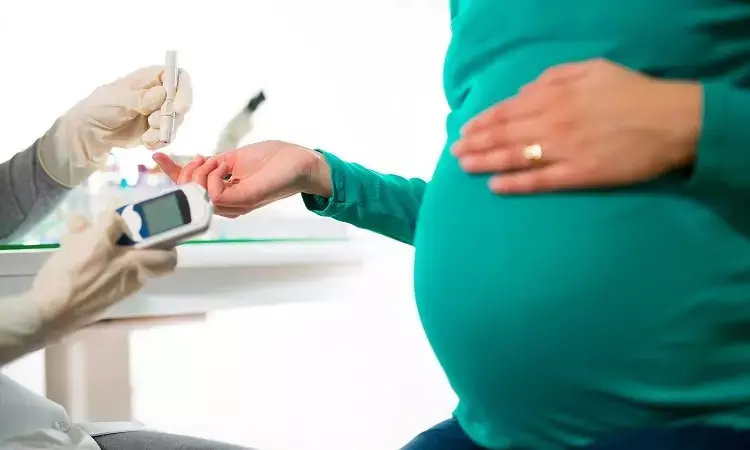- Home
- Medical news & Guidelines
- Anesthesiology
- Cardiology and CTVS
- Critical Care
- Dentistry
- Dermatology
- Diabetes and Endocrinology
- ENT
- Gastroenterology
- Medicine
- Nephrology
- Neurology
- Obstretics-Gynaecology
- Oncology
- Ophthalmology
- Orthopaedics
- Pediatrics-Neonatology
- Psychiatry
- Pulmonology
- Radiology
- Surgery
- Urology
- Laboratory Medicine
- Diet
- Nursing
- Paramedical
- Physiotherapy
- Health news
- Fact Check
- Bone Health Fact Check
- Brain Health Fact Check
- Cancer Related Fact Check
- Child Care Fact Check
- Dental and oral health fact check
- Diabetes and metabolic health fact check
- Diet and Nutrition Fact Check
- Eye and ENT Care Fact Check
- Fitness fact check
- Gut health fact check
- Heart health fact check
- Kidney health fact check
- Medical education fact check
- Men's health fact check
- Respiratory fact check
- Skin and hair care fact check
- Vaccine and Immunization fact check
- Women's health fact check
- AYUSH
- State News
- Andaman and Nicobar Islands
- Andhra Pradesh
- Arunachal Pradesh
- Assam
- Bihar
- Chandigarh
- Chattisgarh
- Dadra and Nagar Haveli
- Daman and Diu
- Delhi
- Goa
- Gujarat
- Haryana
- Himachal Pradesh
- Jammu & Kashmir
- Jharkhand
- Karnataka
- Kerala
- Ladakh
- Lakshadweep
- Madhya Pradesh
- Maharashtra
- Manipur
- Meghalaya
- Mizoram
- Nagaland
- Odisha
- Puducherry
- Punjab
- Rajasthan
- Sikkim
- Tamil Nadu
- Telangana
- Tripura
- Uttar Pradesh
- Uttrakhand
- West Bengal
- Medical Education
- Industry
High blood sugar or diabetes during pregnancy tied to abnormal fetal growth: JAMA

China: In order to ensure normal fetal growth, pregnant women should not only prevent and control gestational diabetes but also avoid increased blood sugar levels in late pregnancy, suggests a recent study. This is especially for women with high blood sugar levels throughout pregnancy.
The study, published in JAMA Network Open, found that pregnant women with a diagnosis of gestational diabetes in mid-pregnancy or having hyperglycemia during all 3 trimesters showed an association with altered fetal growth patterns, including increased birth weight, increased estimated fetal weight that appeared before a gestational age of 24 weeks, and the risk for large size for gestational age and macrosomia.
There is a lack of evidence on the timing of fetal growth tied to gestational diabetes or on the association of the maternal glycemic trajectory with fetal growth during pregnancy. To fill this knowledge gap, Jiao-jiao Zou, Fudan University, Shanghai, China, and colleagues aimed to examine the associations between maternal glucose levels and offspring intrauterine growth in a cohort study.
The study used data from 4574 eligible pregnant women and their offspring in the Shanghai Maternal-Child Pairs Cohort. Data was collected from April 10, 2016, to April 30, 2018. To classify fasting plasma glucose levels during pregnancy into 3 glycemic trajectories, group-based trajectory modeling was used (trajectory 1, consistently normal glucose levels in all 3 trimesters; trajectory 2, hyperglycemia only in late pregnancy; and trajectory 3, hyperglycemia in all 3 trimesters [ie, consistently high glucose levels]).
Gestational diabetes was defined using the results of an oral glucose tolerance test.
The researchers obtained longitudinal fetal biometrics during gestational weeks 11 to 40 and birth outcomes using medical records. Pregnancy was divided into 3 periods (<24, 24-34, and >34 weeks' gestational age). Comparison between differences in offspring growth (log-transformed) and maternal glucose levels using generalized linear mixed models.
A total of 4121 pregnant women had oral glucose tolerance test results (mean age, 28.8 years), 3746 of whom had glycemic trajectory data (mean age, 28.6 years); 983 women (23.8%) had gestational diabetes.
Salient findings of the study include:
- Throughout the pregnancy period and compared with the women without gestational diabetes or with women in the trajectory 1 group, the fetal biometrics for the women with gestational diabetes or for those in the trajectory 3 group were significantly higher (except for biparietal diameter), with an estimated increase in fetal weight in the group with gestational diabetes (β = 1.82) and in the trajectory 3 group (β = 1.50).
- Fetal biometric alterations among women with gestational diabetes appeared before 24 weeks of gestational age, with neonatal birth weight significantly higher than in the group without gestational diabetes at 40.4 g along with an increased risk of large size for gestational age (odds ratio, 1.36) and macrosomia (odds ratio, 1.47).
- Pregnant women in the trajectory 2 group manifested significantly reduced fetal biometrics, and abdominal circumference was significantly augmented after 34 weeks' gestational age (increase, β = 1.92).
"Monitoring the levels of blood sugar throughout pregnancy is important for assessing offspring growth patterns, particularly for pregnant women who did not receive a gestational diabetes diagnosis but who have hyperglycemia in late pregnancy because their offspring had significantly increased abdominal circumference (AC) after a gestational age of 34 weeks," wrote the authors.
Reference:
Zou J, Wei Q, Shi Y, Wang K, Zhang Y, Shi H. Longitudinal Associations Between Maternal Glucose Levels and Ultrasonographic Fetal Biometrics in a Shanghai Cohort. JAMA Netw Open. 2022;5(4):e226407. doi:10.1001/jamanetworkopen.2022.6407
KEYWORDS: JAMA, gestational diabetes, hyperglycemia, fetal growth, blood sugar, pregnancy, diabetes, gestational age, macrosomia, Jiao-jiao Zou, maternal glucose, blood glucose, offspring
Dr Kamal Kant Kohli-MBBS, DTCD- a chest specialist with more than 30 years of practice and a flair for writing clinical articles, Dr Kamal Kant Kohli joined Medical Dialogues as a Chief Editor of Medical News. Besides writing articles, as an editor, he proofreads and verifies all the medical content published on Medical Dialogues including those coming from journals, studies,medical conferences,guidelines etc. Email: drkohli@medicaldialogues.in. Contact no. 011-43720751


